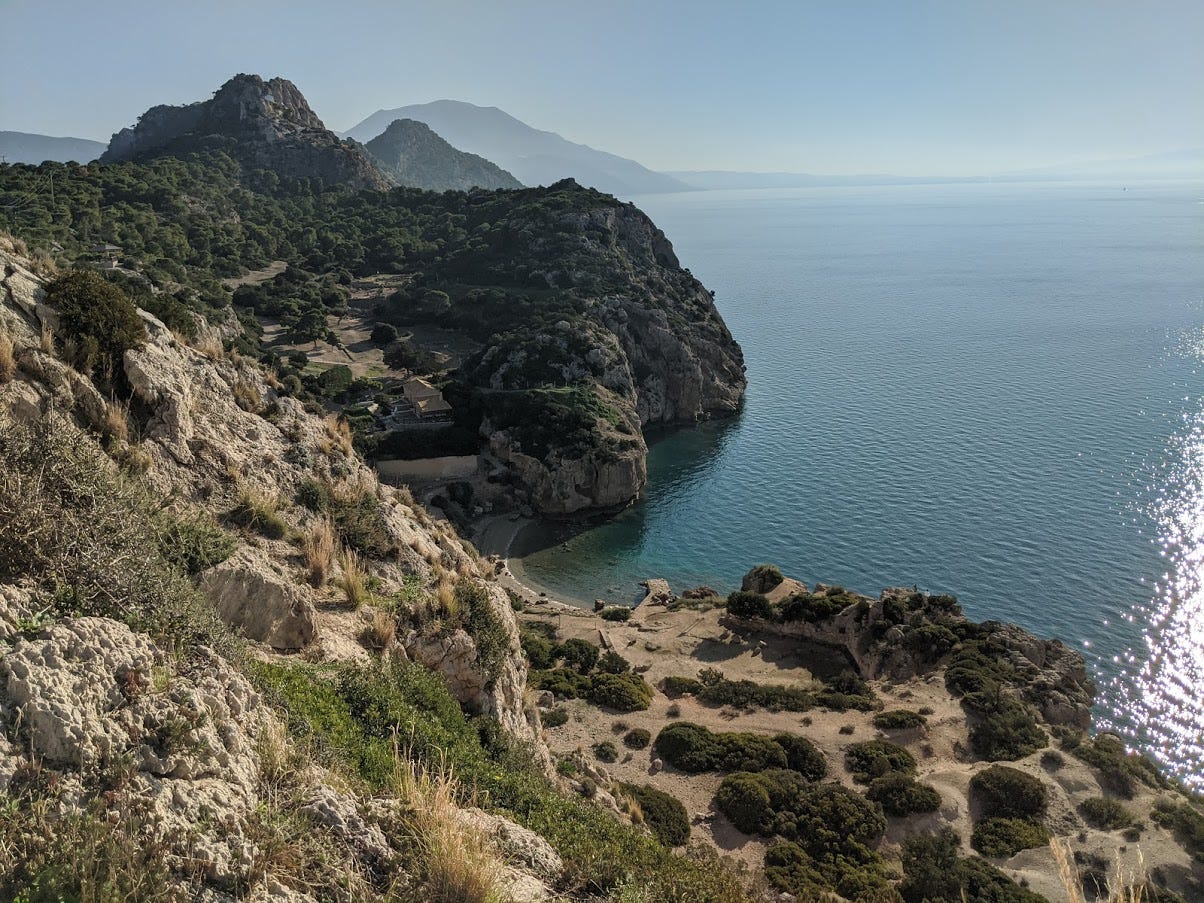Spinning up digital recording systems for rapid survey on Perachora Peninsula, Greece
A FAIMS collaboration with the Perachora Peninsula Archaeology Project (PPAP), January 2020
Hot off the e-press, field reports for a FAIMS-supported archaeological survey on the Perachora Peninsula, Greece, have just been released by Journal of Field Archaeology. The paper by FAIMS 3.0 leadership team members Adela Sobotkova, Shawn A. Ross, Brian Ballsun-Stanton, FAIMS 2.6 alumni Petra Hermankova and Christian Nassif-Haynes, and archaeologists Susan Lupack and Panagiota Kasimi is called ‘Deploying an Offline, Multi-User, Mobile System for Digital Recording in the Perachora Peninsula, Greece’.

It provides a detailed account of the design and deployment of the FAIMS Mobile (v2.6) for a systematic survey as part of the Perachora Peninsula Archaeology Project (PPAP) in three short weeks in January 2020. As a volunteer-reliant project seeking to verify legacy data and record new features over a short field season in a remote location blissfully off-grid, PPAP needed a digital recording system that could be deployed and managed wholly offline. The team was able to rapidly modify a system deployed for cataloguing burial mounds in Bulgaria in 2017 and 2018, turning it into the data collection system for Perachora 2020. During this time, they also customised a previously-developed gridded survey data collection toolkit.
Scoping, adaptation and testing of these two modules by team-members in the field took approximately 53 person-hours over five days. Most of the time was spent figuring out what data to collect and in simulating each workflow. The technical adaptation of the code—by Software Carpentry-skilled archaeologists—took four hours, with a half-hour of pro bono assistance from the programmer of the original module.1 Rigorous testing ensured the modules were bug-free and fit-for-purpose before handing them to students.
The work paid off. The adapted system enabled the recording of 108 features (167,295 discrete values) and 285 survey units in 11 days and all these data were ready for analysis with a few hours of additional analysis at the conclusion of the field season.

The paper provided an opportunity to describe the rationale, design and deployment of the module in greater detail than the FAIMS leadership team has managed in a peer-reviewed journal. There are screenshots of each stage in the recording process to capture the dynamic workflow.
Enjoy it while it lasts! As we move rapidly towards the compilation of FAIMS 3.0 these FAIMS 2.6 interfaces will become legacy ‘artefacts’2 in their own right.
To read the full article and access supplementary material go to https://doi.org/10.1080/00934690.2021.1969837.
A limited number of offprints have been made available to the authors. Contact Professor Shawn Ross (shawn@faims.edu) if you would like a copy. Be quick!
Resources
JFA article: https://doi.org/10.1080/00934690.2021.1969837
Original Burial-Mounds Module: https://github.com/FAIMS/burial
Original Gridded Survey Module: https://github.com/FAIMS/trap-gridded-survey
Changes made by the archaeologists: Side by side diff format
Perachora 2020 release: https://github.com/FAIMS/Perachora-2020/releases/tag/fieldwork-2020
Notes
Working in an open ecosystem can lead to unexpected collaboration benefits. We would like to acknowledge Christian Nassif-Haynes’s assistance in improving the Perachora feature recording module. As we are an open source project, he was able to contribute changes in his spare time when the archaeologists reached out for help.
The use of the word ‘artefact’ in the development of software for archaeological purposes is a no-go zone. In software design, an artefact is a by-product of a software, a relic of how code functioned at a particular point in time. For archaeologists, an artefact is anything made or modified by humans.

